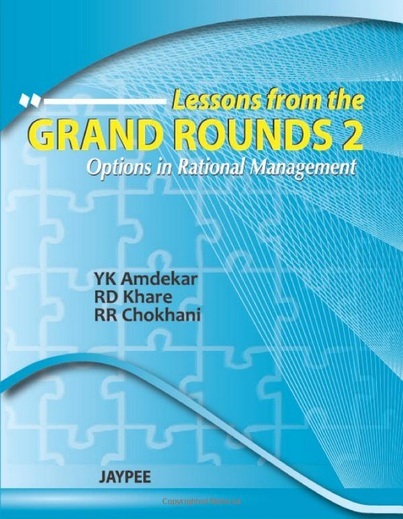 By
By
- YK Amdekar MD, DCH, Senior Consultant Pediatrician, Jaslok and Breach Candy Hospitals, Mumbai , Maharashtra, India, Retired Professor of Pediatrics, Grant Medical College, Mumbai, Maharashtra, India
- RD Khare MD, DCH, Senior Consultant HFH, Former Professor of Pediatrics, KJ Somaiya Medical College, Mumbai , Maharashtra, India
- RR Chokhani MD, DCH, Consultant Pediatrician, Mahavir Medical Research Centre, Mumbai, Maharashtra, India
Lessons from the Grand Rounds, we decided to once again share the lessons that we have learned from our patients. Last time, the focus was on the power of clinical analysis to help reach an accurate diagnosis. We now try to build on the foundations that were laid last time and venture into some other areas of interest. There are four sections to this book. The first section reiterates the value of a painstakingly detailed history and a meticulous clinical examination. It illustrates how short cuts that bypass these fundamental steps often end up in confusion. It is only after retracing one’s steps and falling back on these basics that one can extricate oneself from a maze of investigations that seem to lead to nowhere. In other words, this section reinforces the lesson that there is no point in trying to save time by bypassing what has stood the test of time. In the second section, we continue this process of clinical analysis and step beyond, into the realms of management. Management includes the establishment of a provisional diagnosis, with the help of planned investigations, if necessary, before proceeding with specific treatment. Partially treated cases are often difficult mysteries to solve, since the telltale fingerprints have been either wiped off or have been smudged. It is not easy to pick up the loose ends and reconstruct the true story. Typically, these are areas in clinical medicine where there may be more than one management option—some are more correct than the others. We have picked up a few such situations and a few others, commonly encountered in office practice, where we present our views on the principles that guide the choice of the correct management option. This is followed by a section on a few commonly encountered recurrent problems in clinical practice. Recurrent problems may have a totally different diagnostic and therapeutic implication, as against a one time occurrence of the same problem. Illustrative cases drive home the lessons to be learned in this section.Last, but not the least, is the section on tuberculosis. Understanding tuberculosis has never been easy. As a result, a lot have already been written on various aspects of tuberculosis. We are all aware that the causation of disease depends on the interrelationship between the agent, host and environment. Over the years, a lot of advances have been made in defining the etiological agents of various diseases. A lot of efforts have gone into studying the ‘behavioral’ characteristics of individual ‘agents’, including M. tuberculosis. Each section does not claim to be exhaustive, and therefore, does not cover each and every subtopic or every conceivable situation. We have tried to include prototypes of those cases that are commonly encountered in day-to-day practice. If an occasional relatively uncommon case has been included, it is only because of the interest it generates. A few cases figure in more than one section. This is so, because the same case conveys different messages, when looked at from different perspectives. Purists may not find ‘evidence’ in current medical literature in favor of some of the hypotheses put forth by us. However, at this point in time, we believe this is a rational conjecture.
Download
Note: Only Diamond member can download this ebook. Learn more here!

